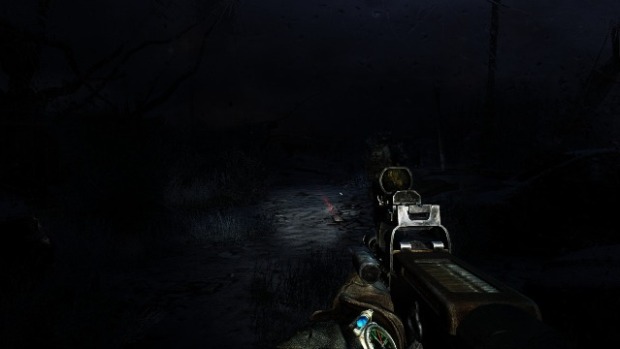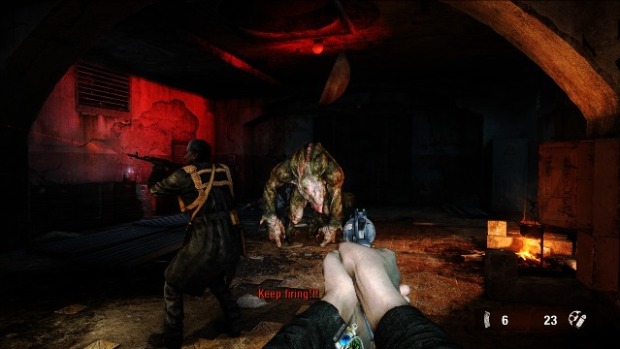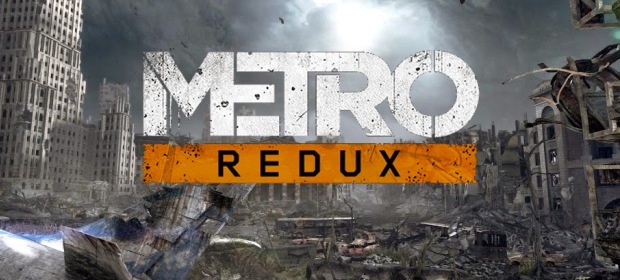If there’s one thing the Metro series is exceptionally good at, it’s creating atmosphere. Where so many games fall flat is where 4A Games’ post-apocalyptic shooter soars, moulding a deeply oppressive and hopelessly grim game world out of rusted iron and flickering lights, and swathing it all in a cloak of shadows and fear. It forces you – in the weary boots of young protagonist Artyom – to not only exist within its sombre, sepulchral world, but to survive in it, an altogether less simple task.
2009’s Metro 2033 came out of nowhere, delivering a bleak, cold-hearted adventure set in a post-nuclear world where the survivors huddle together in the blackness of the underground Metro system, struggling to get by while facing off against surface radiation, mutated beasts, a Nazi resurgence and the enigmatic Dark Ones. It didn’t get everything right: the overall experience was let down at times by its unrelenting grimness, inconsistent checkpointing, difficulty spikes and a general lack of polish. Last year’s sequel, Metro: Last Light, went a long way to correcting the mistakes made by its predecessor, rocking a new engine and improved enemy AI.

Now bundled together as one entity, Metro Redux offers both games and all the DLC for PC and the new generation of consoles. While Last Light remains largely unchanged (and you can read our review of that game, here), 2033 has undergone some serious improvements. The entire game has been rebuilt with the sequel’s superior engine, taking care of the ropey visuals and bringing it in-line with the series’ high point. As a result, Artyom’s world is now even more terrifying, but feels more alive and organic – and that wonderful, frightening atmosphere is even more palpable.
The UI has been redesigned, too, and now matches Last Light’s improved interface in every way. Playing the games back to back, it’s hard to tell the difference, although Last Light still looks the superior offering in terms of aesthetics. Across both games, 4A have introduced several new animations (most notably, the new up-close kills) and have tightened up on things like enemy movement and ally AI. The sound remains the same, however, but then the mostly solid voice-work and stellar sound design wasn’t in need of an overhaul anyway. It all pales in comparison to the incredible lighting effects, though, which prove once again that 4A Games could show Starbreeze a thing or two about effective use of shadow.

Looks aside, the real differences between the two games are found in the gameplay itself. For a start, Last Light has more vehicle sections per square foot than 2033, while the first game simply feels less focused, and the sections between your forays into the darkness seem a little emptier. Luckily, the gunplay is excellent. Rusty old guns and battered blades are the order of the day, but they can all be upgraded and improved as you go. Bullets come in two forms in the world of Metro: the standard, practical kind and the higher-quality, more powerful variety, which also act as the main currency. Much more valuable than Fallout 3’s disposable bottle caps, forcing you to choose between spending bullets on essential gear or using them to defend against the demonic denizens of Moscow’s underground is a masterstroke, upping the stakes and turning what could have been a simple shooter experience into a real survival horror in one subtle move.
2033’s early game is a harrowing nightmare, as you slowly uncover clues to Artyom’s singular destiny and face off against the darkness with sub-standard weaponry and a measly flashlight. Bullets have little impact at this point, and stingy checkpoints can breed frustration – especially when coupled with unpredictable enemy behaviour and Metro’s habit of suddenly hurling monsters at you. It’s less of a problem in Last Light, but the difficulty may still prove an occasional stumbling block to newcomers.

Expeditions to the surface and into sudden radiation hotspots add an extra layer of fear, as your gasmask becomes your best friend. The filters are finite, however, as is the power of your flashlight. There’s always a background worry nagging at your mind that you’re going to lose one of both of them at any moment, either plunging you into darkness or leaving you choking to death on your knees as the mutants close in. Resource management is just as essential as a good aim.
What makes both games so compelling is the air of mystery underpinning the action. Uncovering the truth behind the Dark Ones and piecing together Artyom’s fate provides a powerful hook to swing you from one haunted tunnel and intense firefight to the next; that this world is faithfully based on a series of novels (by Russian author Dmitry Glukhovsky) is as apparent here as it is in CD Projeckt RED’s Witcher games. The world feels old and vital and, more importantly, full, as though there’s always something to discover around every corner and in every abandoned tin shack.
A host of game modes promote replayability and make up for the lack of a multiplayer mode. The two main experiences are Ranger and Spartan, the former a more survival-focused mode with limited resources; the latter closer to a traditional FPS, giving you extra ammo and gasmask filters and putting less onus on conservation and careful planning. Beyond that, different sub-difficulties offer greater challenge. Hardcore mode is the most intriguing and, frankly, masochistic. This removes the HUD completely, even going so far as to stop you being able to select weapons from the menu, and forces you to rely on your watch and compass to navigate and survive. You can’t even see quick-time events, which is utterly terrifying when a mutant gets hold of you. Some will argue that this is the purest way to play, but it’s not for the faint of heart or weak of stomach.
VERDICT: Even if you played the original releases, Metro Redux is still an attractive proposition. The improvements to 2033 are substantial, while the more minor tweaks to Last Light simply refine a fantastic experience. In one package, these games together offer a huge amount of gameplay and one of the most arresting game-worlds you’ll ever see in a shooter. If, on the other hand, you’ve never delved into Glukhovsky’s subterranean nightmare, Redux is more than worth the asking price.

VERY GOOD. An 8/10 is only awarded to a game we consider truly worthy of your hard-earned cash. This game is only held back by a smattering of minor or middling issues and comes highly recommended.
Review code provided by publisher.





